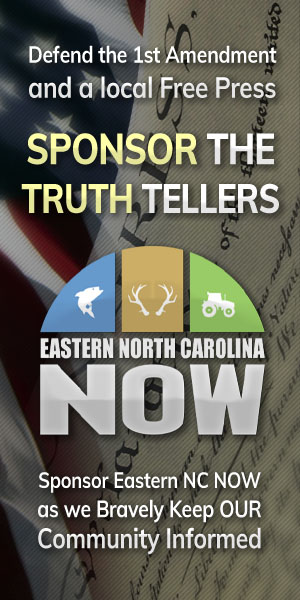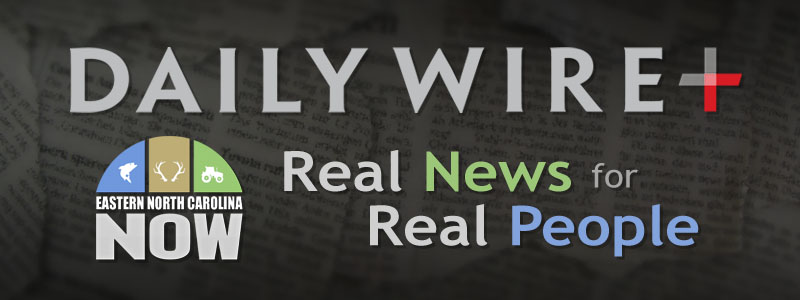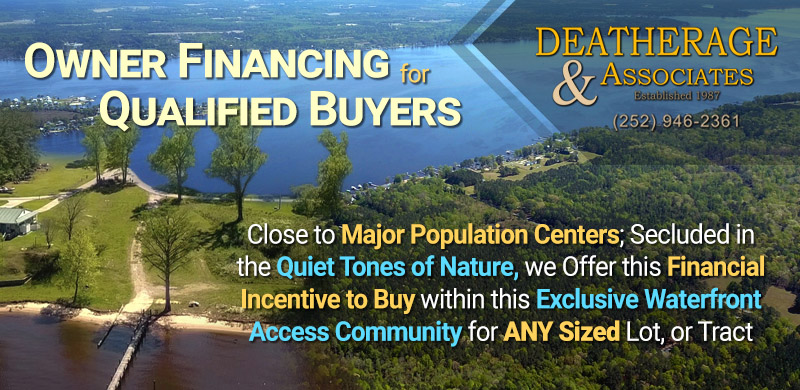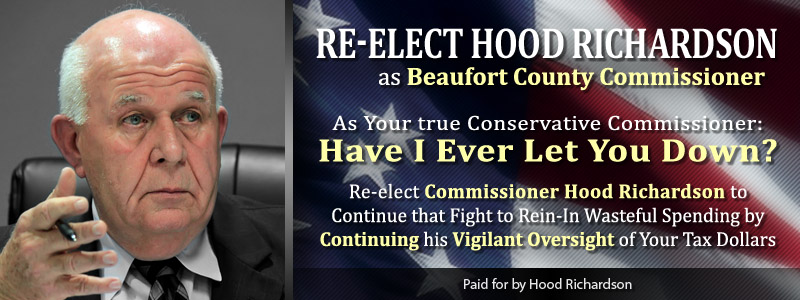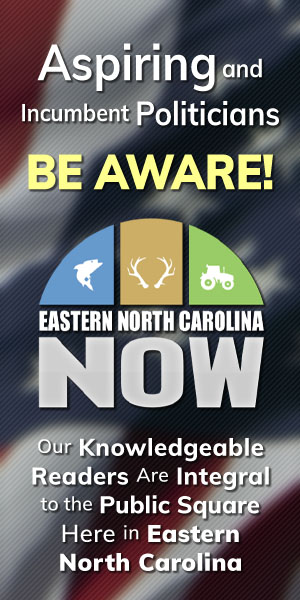The First Amendment Guarantees ALL Freedoms, including a Truthful Press
Press Briefing by White House COVID-19 Response Team and Public Health Officials
Press Release:
Via Teleconference • February 26 • 11:04 A.M. EST
ACTING ADMINISTRATOR SLAVITT: Thank you for joining us for our White House COVID Response briefing. I have a few important updates for you this morning, and then I will turn to Doctors Fauci and Walensky.
First, on our efforts to mobilize the country to defeat COVID-19, and second, on our progress in supporting 100 community vaccination centers nationwide to vaccinate more people, more quickly, and more equitably.
Before I get there, let me begin by taking stock of where we are. Even as we have crossed the grimmest of milestones — the loss of over 500,000 American lives — we are pulling together as a country. In the time since the President has taken office, we've now doubled the pace of vaccinations and are rapidly on our way to vaccinating many of the people most at risk of dying or being hospitalized from COVID-19, with nearly one in five adults and nearly half of Americans over 65 having received their first shot.
What is important and what I want to cover today is that any progress is a result of the hard work of many — people and entities working together for the greater good: vaccine manufacturers, Pfizer and Moderna; distribution partners at McKesson, FedEx, and UPS; governors, mayors, county officials, and their health departments; the thousands of providers, pharmacies, and members of the military; FEMA; and other states and federal employees that had been part of this vaccination effort. And, of course, all the people of science in the NIH, NIAID, the CDC, BARDA, and FDA.
This is all one effort. There is so much more to do, but one thing that has become clear is that while none of us on our own could defeat COVID-19, all of us working together can. And today I want to highlight what people across America can contribute to this cause at this critical time.
From day one, President Biden has been pulling the country together to unify against the virus. This begins with Congress. We cannot defeat this virus as rapidly as we need to without action from Congress.
Today, the House will start the vote process on the American Rescue Plan. This legislation will enable Americans across the country to defeat COVID-19 and get back to normal life more quickly. The bill is critical to allowing us to do some things that we all need to do to defeat this virus: needed funding to make schools safer to open; the ability to stay ahead of the virus as it mutates by funding greater sequencing; testing and tracing to contain outbreaks and stay ahead of new variants; addressing supply shortages; investing in high-quality treatments for people with COVID-19; providing paid sick leave and other support to contain the spread of the virus; and providing relief to the communities hardest hit by the disease.
We urge the Senate to quickly follow and pass this legislation. Just as Congress is taking action, so too are the nation's private and civil sectors and the small and large companies that are at the heart of our economy and provide jobs to so many.
One of the benefits of being and providing honest and clear communication with the public about the challenges we face are all of the people who raise their hands and offer to help.
Since the President's first day on the job 37 days ago, he's called us to come together and defeat this as a nation.
Since January 20th, we have been engaging in literally hundreds of conversations with hundreds of companies who are eager to help put an end to COVID-19, get people safely back to work, rehire workers, and grow the economy, as the President outlined in his national strategy to defeat COVID-19.
So today, the administration is announcing a new partnership with America's leading business organizations to enlist the full force of the private sector to defeat COVID-19 with a call to action. The Biden administration is joining with the Chamber of Commerce; leaders of the black, Latino, and Asian business community; the National Association of Manufacturers; and the Business Roundtable to call on businesses, big and small, to promote three critical efforts across the country.
Our call asks three things of America's businesses to increase the safety of employees, customers, and the community, and will help us put a more rapid end to this pandemic.
First, require masking and social distancing to protect workers, customers, and others on their premises.
Second, reduce barriers to vaccinations. Make a plan to get employees vaccinated and make it easier for employees to get vaccinated by providing incentives, like paid time off or compensation for employees to get vaccinated when it's their turn.
Third, communicate with customers and educate the public about the benefits of masking and vaccinations. We are asking businesses to amplify CDC messages about masking and vaccinations on their products, properties, and websites.
Through these partner organizations, step-by-step resources to help businesses operate safely will be available. HHS and CDC are collaborating with them so they can take advantage of our research and approaches to talking about vaccines and vaccinations most effectively.
Together, we hope to reach hundreds of thousands of businesses, representing over 100 million people, to promote efforts to stop the spread of COVID-19.
This afternoon at 4:00 p.m., I will be hosting a call with thousands of business owners to lay out this call to action and ask for their help and participation.
But the work has already begun. Since we've arrived, we have had over 250 conversations with business leaders in sectors as diverse as technology, retail, social media, medical products, airlines, health insurance, hospitals, utilities, and we're having more every day. Each of them has something valuable to add.
Ford and The Gap are producing and donating millions of masks. Professional sports leagues and the live events industry have offered their more than 100 stadiums and venues to local communities to be used as vaccination sites. Retailers like Best Buy, Target, and Dollar General all are giving more than a half a million workers paid time off or compensating employees who get vaccinated. Uber, PayPal, and Walgreens are teaming up to provide $10 million worth of free rides to vaccination sites. And Lyft is partnering with CVS and the YMCA to provide 60 million free or discounted rides to vaccination sites.
In both of these efforts, we are encouraging organizations to target the benefits to people who need them the most so communities hit hardest bounce back. CVS has also agreed to improved access and appointment times for people looking for vaccines and special efforts to reserve vaccine appointments. This is critical to health equity.
The utility company, Avangrid, has committed to include more — to include public health information in more than 3 million paper bills.
These are examples, but examples that others can replicate in addition to their own unique efforts.
Our call to action today will ask companies to make similar, unique commitments that bring their unique skills and resources to the problem of keeping Americans safe and ending the pandemic as quickly as possible while also following the lead of these other companies.
Over the coming weeks, the Biden administration will highlight more innovative ways, and America's private sector is rising to the challenge as we put this crisis to bed by working together.
Let me talk now about the progress we're making to reach the President's goal — to reach the President's goal of 100 community vaccination centers within the next — within his first month in office.
Thanks to the incredible work of FEMA, the Department of Defense, and colleagues across the government, since January 20, the Biden-Harris administration has already supported the establishment or expansion of 441 community vaccination centers across 37 states, territories, and the District of Columbia.
Over the past month, we've provided 171 sites with federal personnel. We've deployed nearly 3,500 total personnel nationwide to support vaccination operations, including expert logisticians, vaccinators, greeters, clerks, and others in support roles. Personnel are assigned from agencies across the federal government, including FEMA, CDC, DOD, National Guard, and the Forest Service, Department of Interior, Veterans Affairs Department, and the Army Corps of Engineers.
A hundred and seventy-seven sites have received federal funding, and the President — and at the President's direction, FEMA is reimbursing 100 percent of costs for vaccination operations. This funding covers critical supplies, staffing, training, and transportation needs that support increased vaccination distribution and administration.
Sixty-two sites have received federal equipment, from folding chairs to containers to dry ice. The federal government has provided a range of equipment to meet state, tribal, territory, and local needs, and help establish and expand sites. This will get done in the details. Thank you to everyone involved in these efforts.
The President is visiting a federally established community vaccination site today in Houston, Texas. This site opened yesterday and has the capacity to vaccinate 6,000 people per day. And today we're announcing two new federal vaccination sites, one in North Carolina and the other in Illinois. Starting in two weeks, the United Center in Chicago will be used to vaccinate up to 6,000 people per day. And in North Carolina, a new site in Greensboro will have the capacity to vaccinate 3,000 people per day.
The selection of both of these sites was based on a CDC-FEMA framework developed to target those most vulnerable. The goal is to launch vaccination sites that use processes and are in locations that promote equity, deploying the CDC's Social Vulnerability Index.
In closing, I want to come back to the important milestone of where we are this week, with over 50 million shots that have been administered since President Biden took office — 50 million shots in 37 days. That's ahead of our target, even with the setbacks we faced during the recent winter storm, which devastated millions of people in the Midwest and in the South.
As the President has said, if we do the right things and we have the right plan, we will get things moving. We've doubled the pace of administering shots in six weeks. We've increased vaccine distribution to near — to nearly — to states by nearly 70 percent. And nearly 60 percent of people over 75 now have received at least one shot; that was 14 percent six weeks ago. Close to 50 percent of people over 65 have at least one shot now; that was 8 percent six weeks ago.
I want to repeat that: 8 percent of people over 65 and now 50 per- — six weeks ago had received their first shot. Now that's close to 50 percent. That's important because people over 65 accounted for 80 percent of COVID-19 deaths, and 75 percent of people who live in long-term care facilities have gotten their first dose, and those cases are at the lowest level since reporting began in May.
So, yes, we are making progress, but we are not there yet, and there's lots of hard work to do. But I want to thank everybody — everybody across the country that's been involved in helping us make this progress.
And with that, I will turn it over to Dr. Walensky.
...
Read the full transcript HERE.
You can visit a collection of all White House posts by clicking HERE.
Go Back
ACTING ADMINISTRATOR SLAVITT: Thank you for joining us for our White House COVID Response briefing. I have a few important updates for you this morning, and then I will turn to Doctors Fauci and Walensky.
First, on our efforts to mobilize the country to defeat COVID-19, and second, on our progress in supporting 100 community vaccination centers nationwide to vaccinate more people, more quickly, and more equitably.
Before I get there, let me begin by taking stock of where we are. Even as we have crossed the grimmest of milestones — the loss of over 500,000 American lives — we are pulling together as a country. In the time since the President has taken office, we've now doubled the pace of vaccinations and are rapidly on our way to vaccinating many of the people most at risk of dying or being hospitalized from COVID-19, with nearly one in five adults and nearly half of Americans over 65 having received their first shot.
What is important and what I want to cover today is that any progress is a result of the hard work of many — people and entities working together for the greater good: vaccine manufacturers, Pfizer and Moderna; distribution partners at McKesson, FedEx, and UPS; governors, mayors, county officials, and their health departments; the thousands of providers, pharmacies, and members of the military; FEMA; and other states and federal employees that had been part of this vaccination effort. And, of course, all the people of science in the NIH, NIAID, the CDC, BARDA, and FDA.
This is all one effort. There is so much more to do, but one thing that has become clear is that while none of us on our own could defeat COVID-19, all of us working together can. And today I want to highlight what people across America can contribute to this cause at this critical time.
From day one, President Biden has been pulling the country together to unify against the virus. This begins with Congress. We cannot defeat this virus as rapidly as we need to without action from Congress.
Today, the House will start the vote process on the American Rescue Plan. This legislation will enable Americans across the country to defeat COVID-19 and get back to normal life more quickly. The bill is critical to allowing us to do some things that we all need to do to defeat this virus: needed funding to make schools safer to open; the ability to stay ahead of the virus as it mutates by funding greater sequencing; testing and tracing to contain outbreaks and stay ahead of new variants; addressing supply shortages; investing in high-quality treatments for people with COVID-19; providing paid sick leave and other support to contain the spread of the virus; and providing relief to the communities hardest hit by the disease.
We urge the Senate to quickly follow and pass this legislation. Just as Congress is taking action, so too are the nation's private and civil sectors and the small and large companies that are at the heart of our economy and provide jobs to so many.
One of the benefits of being and providing honest and clear communication with the public about the challenges we face are all of the people who raise their hands and offer to help.
Since the President's first day on the job 37 days ago, he's called us to come together and defeat this as a nation.
Since January 20th, we have been engaging in literally hundreds of conversations with hundreds of companies who are eager to help put an end to COVID-19, get people safely back to work, rehire workers, and grow the economy, as the President outlined in his national strategy to defeat COVID-19.
So today, the administration is announcing a new partnership with America's leading business organizations to enlist the full force of the private sector to defeat COVID-19 with a call to action. The Biden administration is joining with the Chamber of Commerce; leaders of the black, Latino, and Asian business community; the National Association of Manufacturers; and the Business Roundtable to call on businesses, big and small, to promote three critical efforts across the country.
Our call asks three things of America's businesses to increase the safety of employees, customers, and the community, and will help us put a more rapid end to this pandemic.
First, require masking and social distancing to protect workers, customers, and others on their premises.
Second, reduce barriers to vaccinations. Make a plan to get employees vaccinated and make it easier for employees to get vaccinated by providing incentives, like paid time off or compensation for employees to get vaccinated when it's their turn.
Third, communicate with customers and educate the public about the benefits of masking and vaccinations. We are asking businesses to amplify CDC messages about masking and vaccinations on their products, properties, and websites.
Through these partner organizations, step-by-step resources to help businesses operate safely will be available. HHS and CDC are collaborating with them so they can take advantage of our research and approaches to talking about vaccines and vaccinations most effectively.
Together, we hope to reach hundreds of thousands of businesses, representing over 100 million people, to promote efforts to stop the spread of COVID-19.
This afternoon at 4:00 p.m., I will be hosting a call with thousands of business owners to lay out this call to action and ask for their help and participation.
But the work has already begun. Since we've arrived, we have had over 250 conversations with business leaders in sectors as diverse as technology, retail, social media, medical products, airlines, health insurance, hospitals, utilities, and we're having more every day. Each of them has something valuable to add.
Ford and The Gap are producing and donating millions of masks. Professional sports leagues and the live events industry have offered their more than 100 stadiums and venues to local communities to be used as vaccination sites. Retailers like Best Buy, Target, and Dollar General all are giving more than a half a million workers paid time off or compensating employees who get vaccinated. Uber, PayPal, and Walgreens are teaming up to provide $10 million worth of free rides to vaccination sites. And Lyft is partnering with CVS and the YMCA to provide 60 million free or discounted rides to vaccination sites.
In both of these efforts, we are encouraging organizations to target the benefits to people who need them the most so communities hit hardest bounce back. CVS has also agreed to improved access and appointment times for people looking for vaccines and special efforts to reserve vaccine appointments. This is critical to health equity.
The utility company, Avangrid, has committed to include more — to include public health information in more than 3 million paper bills.
These are examples, but examples that others can replicate in addition to their own unique efforts.
Our call to action today will ask companies to make similar, unique commitments that bring their unique skills and resources to the problem of keeping Americans safe and ending the pandemic as quickly as possible while also following the lead of these other companies.
Over the coming weeks, the Biden administration will highlight more innovative ways, and America's private sector is rising to the challenge as we put this crisis to bed by working together.
Let me talk now about the progress we're making to reach the President's goal — to reach the President's goal of 100 community vaccination centers within the next — within his first month in office.
Thanks to the incredible work of FEMA, the Department of Defense, and colleagues across the government, since January 20, the Biden-Harris administration has already supported the establishment or expansion of 441 community vaccination centers across 37 states, territories, and the District of Columbia.
Over the past month, we've provided 171 sites with federal personnel. We've deployed nearly 3,500 total personnel nationwide to support vaccination operations, including expert logisticians, vaccinators, greeters, clerks, and others in support roles. Personnel are assigned from agencies across the federal government, including FEMA, CDC, DOD, National Guard, and the Forest Service, Department of Interior, Veterans Affairs Department, and the Army Corps of Engineers.
A hundred and seventy-seven sites have received federal funding, and the President — and at the President's direction, FEMA is reimbursing 100 percent of costs for vaccination operations. This funding covers critical supplies, staffing, training, and transportation needs that support increased vaccination distribution and administration.
Sixty-two sites have received federal equipment, from folding chairs to containers to dry ice. The federal government has provided a range of equipment to meet state, tribal, territory, and local needs, and help establish and expand sites. This will get done in the details. Thank you to everyone involved in these efforts.
The President is visiting a federally established community vaccination site today in Houston, Texas. This site opened yesterday and has the capacity to vaccinate 6,000 people per day. And today we're announcing two new federal vaccination sites, one in North Carolina and the other in Illinois. Starting in two weeks, the United Center in Chicago will be used to vaccinate up to 6,000 people per day. And in North Carolina, a new site in Greensboro will have the capacity to vaccinate 3,000 people per day.
The selection of both of these sites was based on a CDC-FEMA framework developed to target those most vulnerable. The goal is to launch vaccination sites that use processes and are in locations that promote equity, deploying the CDC's Social Vulnerability Index.
In closing, I want to come back to the important milestone of where we are this week, with over 50 million shots that have been administered since President Biden took office — 50 million shots in 37 days. That's ahead of our target, even with the setbacks we faced during the recent winter storm, which devastated millions of people in the Midwest and in the South.
As the President has said, if we do the right things and we have the right plan, we will get things moving. We've doubled the pace of administering shots in six weeks. We've increased vaccine distribution to near — to nearly — to states by nearly 70 percent. And nearly 60 percent of people over 75 now have received at least one shot; that was 14 percent six weeks ago. Close to 50 percent of people over 65 have at least one shot now; that was 8 percent six weeks ago.
I want to repeat that: 8 percent of people over 65 and now 50 per- — six weeks ago had received their first shot. Now that's close to 50 percent. That's important because people over 65 accounted for 80 percent of COVID-19 deaths, and 75 percent of people who live in long-term care facilities have gotten their first dose, and those cases are at the lowest level since reporting began in May.
So, yes, we are making progress, but we are not there yet, and there's lots of hard work to do. But I want to thank everybody — everybody across the country that's been involved in helping us make this progress.
And with that, I will turn it over to Dr. Walensky.
...
Read the full transcript HERE.
- Contact: White House
- Press Office
| DHS Announces Funding Opportunity for $1.87 Billion in Preparedness Grants | News Services, Government, State and Federal | Press Briefing by Press Secretary Jen Psaki, February 25, 2021 |


